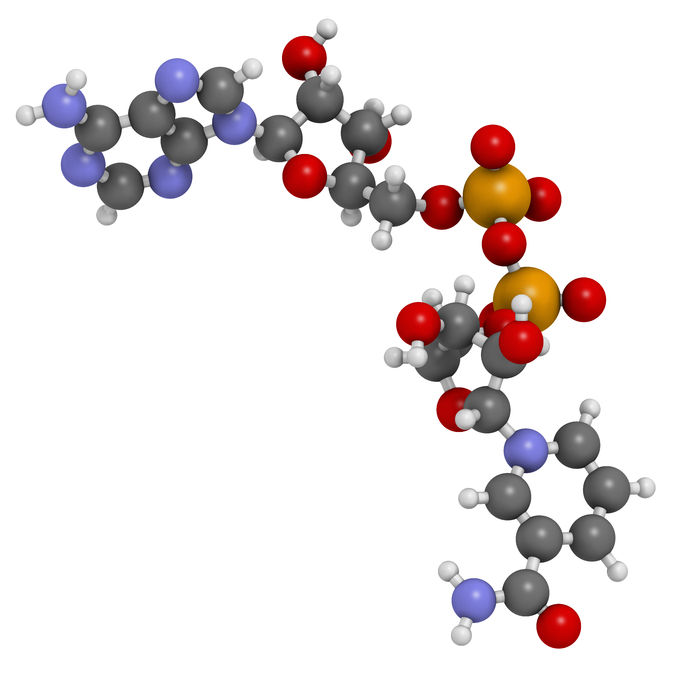
25254389 – nicotinamide adenine dinucleotide (nad+) coenzyme molecule. important coenzyme in many redox reactions. atoms are represented as spheres with conventional color coding: hydrogen (white), carbon (grey), nitrogen (blue), oxygen (red), phosphorus (orange).
A new study from Australia suggests that Nicotinamide may help prevent Malignant Melanoma.
In a review published in the journal Photodermatology, Photoimmunology& Photomedicine, Professor Gary Halliday of the University of Sydney, Australia and associates, presented their findings.
It is well known that Ultraviolet Radiation damages the DNA in the cell nucleus. Professor Halliday and his team lists studies showing that Nicotinamide can boost DNA repair following UV exposure.
In addition, Nicotinamide can also reduce immunosuppression and inflammation, both of which are factors in cancer progression.
Dr Halliday and his team have demonstrated in a recent study that Nicotinamide 500 mg daily reduced the incidence of non melanoma skin cancer by 23%. Dr Halliday and his team state that larger studies are now warranted to determine the efficacy of Nicotinamide for prevention of Malignant Melanoma
In the meanwhile, using sunscreen, seeking the shade and wearing sunglasses, sun protective hats and clothing remain the primary skin cancer prevention methods.


Recent Comments